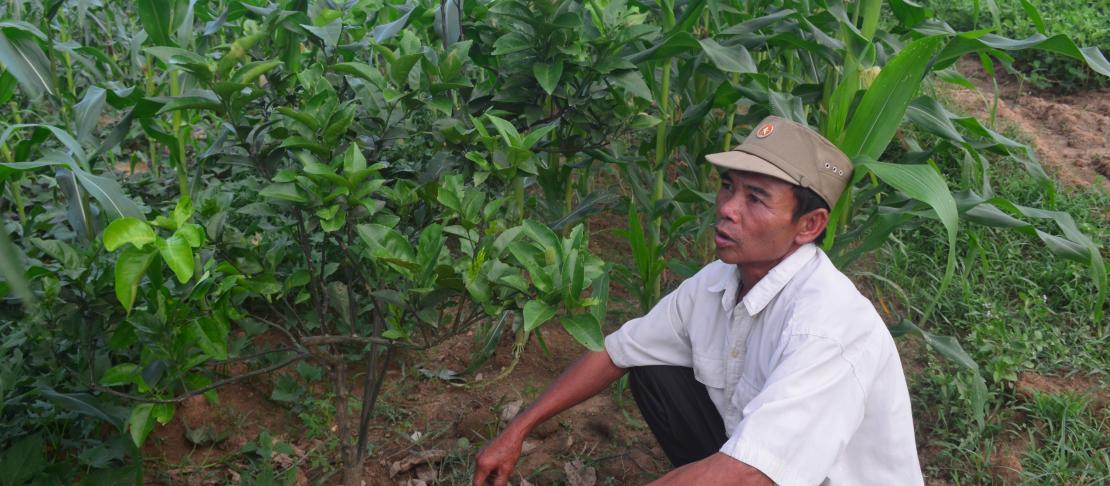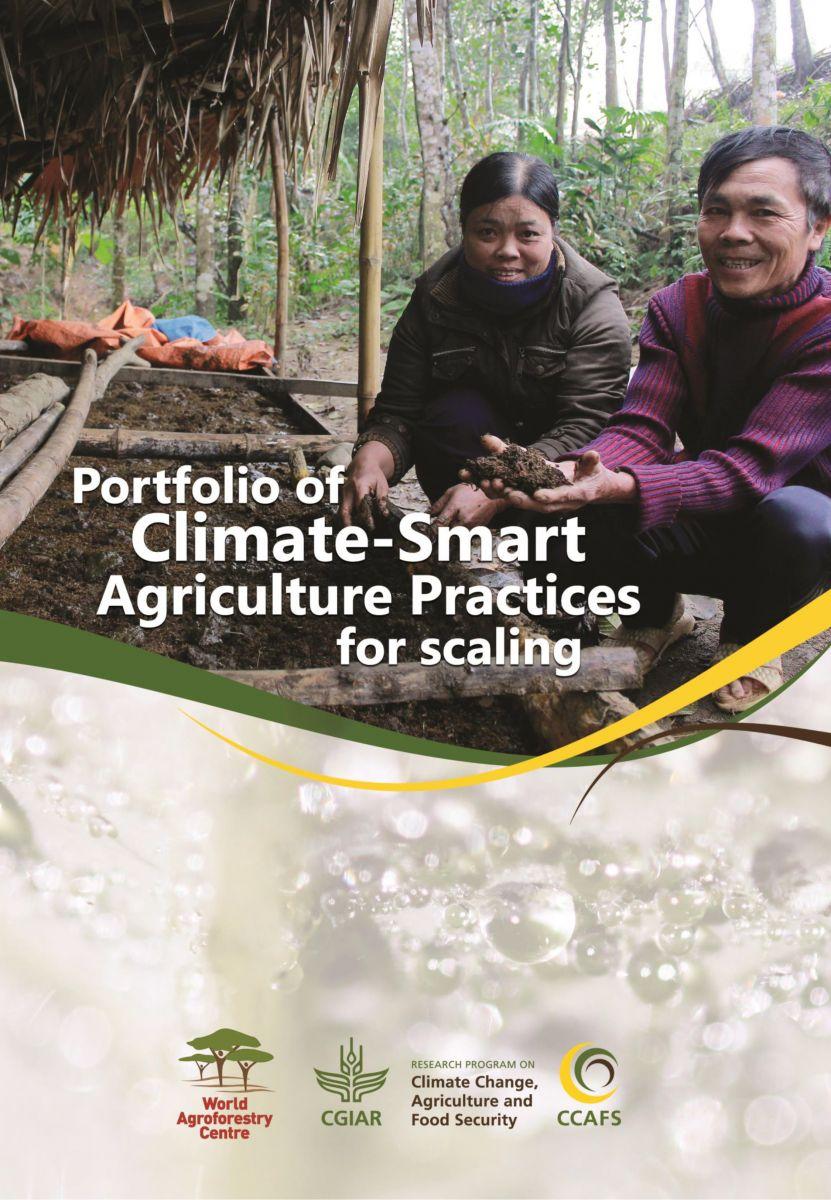Scalable climate-smart agriculture technologies and practices that communities can adopt

Are agroforestry systems worth the investment?
A portfolio of climate-smart agriculture (CSA) technologies and practices was published by the World Agroforestry Centre (ICRAF) Vietnam and the CGIAR Research Program on Climate Change, Agriculture and Food Security (CCAFS). The portfolio features four CSA practices with corresponding cost-benefit analyses (CBA), presenting what could be gained from these practices and at what cost.
Orange-based agroforestry systems
Orange-based agroforestry systems are land-use systems wherein orange trees and crops are planted together. These systems help reduce surface runoff, lessen soil erosion, increase carbon stocks, regulate microclimate conditions, and bring higher and more consistent average annual incomes to communities, among other benefits.
In fact, these systems generate a Net Present Value (NPV) of about VND 1 billion per hectare—almost 9 times higher than that of acacia-based systems (VND 118 million per hectare) and 19 times more than a cassava monoculture (VND 53 million per hectare).
The NPV is a measure that indicates how much the farmers will gain from a certain investment. The computed NPV covers a 16-year period with a 6.5% discount rate.
Black pepper home gardens
Integrated home gardens with black pepper may serve as another source of income for households. Specifically, over a 16-year period, households can gain an NPV of between VND 5.5 million at a market price of VND 67,000 per kilo, and VND 2.5 billion at VND 200,000 per kilo.
These home gardens, when intercropped with trees and complemented with vermicompost and compost, also contribute to biodiversity and regulate microclimate conditions. Households can harvest the peppers as soon as the third year, gaining a net return over the initial investment the following year. Over a decade, integrated home gardens nurture the soil and increase household income.
Acacia-based agroforestry systems
Acacia is a nitrogen-fixing agent that can improve soil fertility and moisture levels and prevent soil erosion. Based on the CBA for acacia-based systems, communities should adopt eight- and twelve-year rotations instead of the traditional four-year cycle. The eight-year rotation, wherein 75% of the trees are harvested in the fourth year and the remaining 25% are harvested in the eighth year, yields a return of almost VND 200 million per hectare. The 12-year rotation yields even more, generating a return of around VND 250 million per hectare.
Vermiculture
Vermiculture involves using earthworms to turn organic residues into nutrient-rich compost materials that can fertilize soil. Vermiculture is one method of creating organic fertilizers that can be used instead of inorganic products. The liquid, vermijuice, can be extracted from the compost material and turned into bio-pesticide. The earthworms, after nourishing the soil, can be fed to fish or poultry. The reuse and recycling of these farm resources leads to increased soil health and agricultural productivity.
Based on the CBA, which covers a one-year period, farmers in My Loi Climate-Smart Village in Vietnam could earn at least VND 11 million annually by selling 575 kg of worms with substrates. The interviewed farmers added that the worms provide protein for their poultry, which resulted in faster growth, smoother feathers, and stronger resistance to diseases.
The portfolio of climate-smart practices will be continuously updated with more practices as the results are ready.
Download the publication: Le TT, Simelton E. 2018. Portfolio of CSA practices for scaling. No. 1. Wageningen, The Netherlands: CGIAR Research Program on Climate Change, Agriculture and Food Security (CCAFS).
Read more:
- Blog post: How can we turn climate-smart agriculture to a good investment?
- News update: Not your ordinary agri-fair: Showcasing climate-smart agriculture products and practices in Vietnam
- News update: A menu for climate-smart agriculture outscaling in Vietnam
Renz Louie Celeridad is the Junior Communications Specialist for the World Agroforestry Centre Philippines. He also works as a Communications Consultant for CCAFS SEA.




